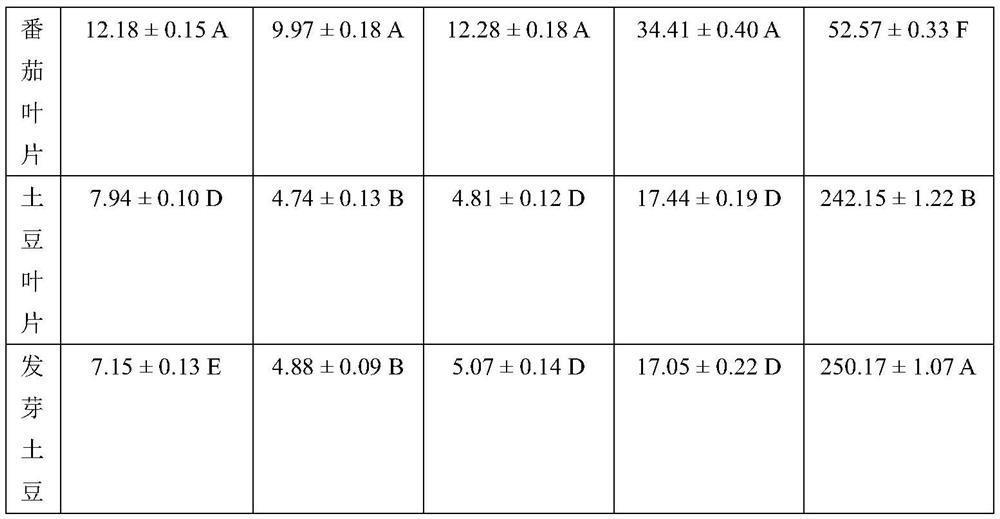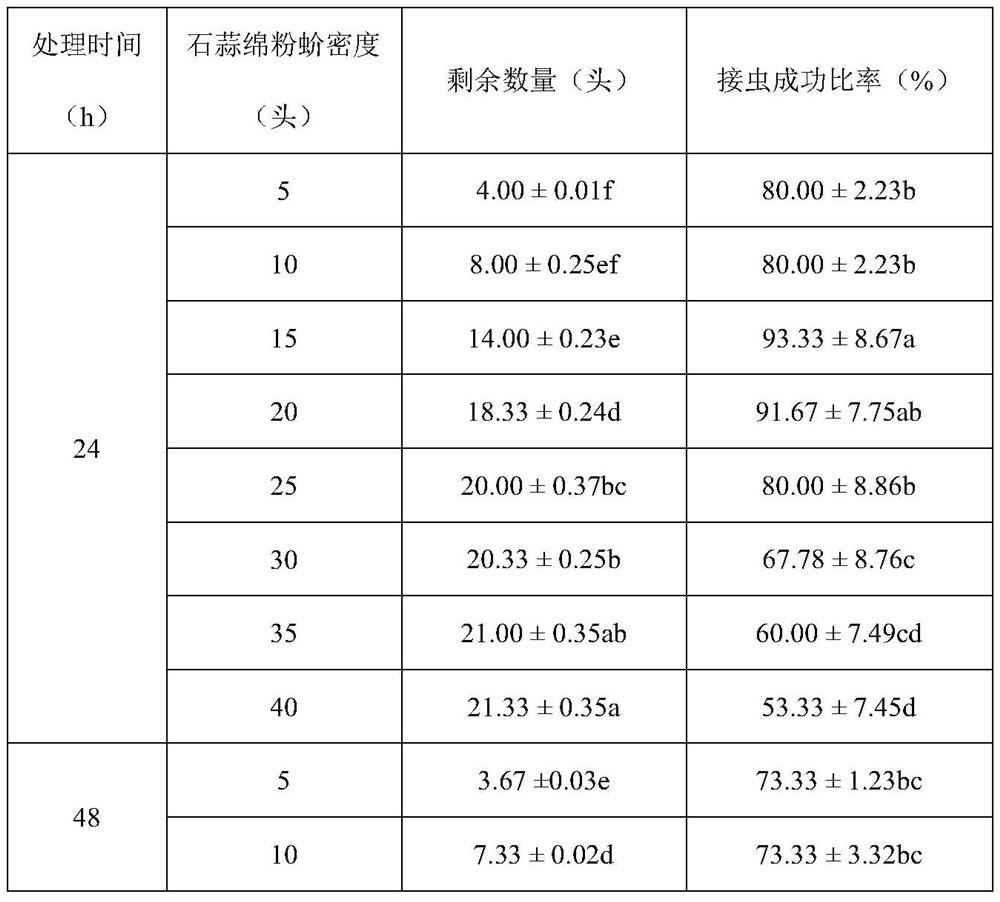Indoor subculture breeding method of Phenacoccus solani Ferris
A technology for mealybugs and potatoes of Amaryllis chinensis, applied in animal husbandry, etc., can solve problems such as coal pollution, affect plant photosynthesis, and plant death in pieces, achieve high feeding efficiency, shorten the development period, and reduce feeding costs Effect
- Summary
- Abstract
- Description
- Claims
- Application Information
AI Technical Summary
Problems solved by technology
Method used
Image
Examples
Embodiment 1
[0027] Embodiment 1 The influence of different host plants on the nymph survival rate, duration and single female oviposition of Amaryllis lycoides
[0028] The common and best-selling succulent varieties suitable for Amaryllis lycoccus and black mage, lettuce leaves, tomato leaves, potato leaves and germinated potatoes were selected as host plants, and the survival rate and development of the mealybug on different host plants were compared. duration and fecundity to determine the most suitable host. Among them, the succulent plants (Ji Luyue and Hei Mage), lettuce leaves, tomato leaves and potato leaves are treated by hydroponics, and the germinated potatoes are whole potatoes with a sprout length of 1-2 cm. Treatment of hydroponic host plants: select plant tissues with a total length of stems and leaves of 10 cm, wrap the lower end with absorbent cotton, and then insert them into a vertically placed test tube with an outer diameter of 1.5 cm and filled with clean water.
[...
Embodiment 2
[0039] Example 2 Effects of Different Stocking Densities on the Escape Rate, Development and Reproduction of Lycoris lycoris
[0040] 5, 10, 15, 20, 25, 30, 35 and 40 newly hatched nymphs of P. amaryllis were respectively connected to one germinated potato. After 24h, 48h and 72h, the number of remaining mealybugs was counted, and a single potato was analyzed Optimal number of infestation. Each treatment was repeated 3 times.
[0041] Table 2 Persistence of Lycoris lycoccus on a single germinated potato tuber
[0042]
[0043]
[0044] Note: Different lowercase letters indicate significant differences among treatments, the same below.
[0045] It can be seen from Table 2 that after 24 hours of inoculation, the number of mealybugs remaining on potatoes gradually increased as the number of inoculations increased, but when the number of inoculations exceeded 30, the proportion of successful inoculations gradually decreased; After 48 and 72 hours of infestation, the number ...
PUM
 Login to View More
Login to View More Abstract
Description
Claims
Application Information
 Login to View More
Login to View More - R&D
- Intellectual Property
- Life Sciences
- Materials
- Tech Scout
- Unparalleled Data Quality
- Higher Quality Content
- 60% Fewer Hallucinations
Browse by: Latest US Patents, China's latest patents, Technical Efficacy Thesaurus, Application Domain, Technology Topic, Popular Technical Reports.
© 2025 PatSnap. All rights reserved.Legal|Privacy policy|Modern Slavery Act Transparency Statement|Sitemap|About US| Contact US: help@patsnap.com



